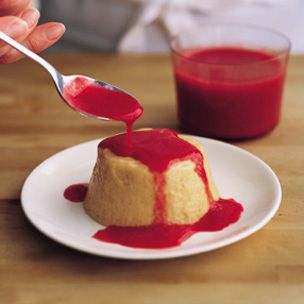
Whether playing the role of a finishing touch or of an essential component, a sauce should seamlessly complement the dish it accompanies. It should neither overwhelm the other ingredients nor be overshadowed by them. Sauces can be rich, like hollandaise, or light and fresh tasting, like salsa fresca. They can be complex and labor-intensive, like Mexico's mole, or lightning quick to prepare, like a whole-grain mustard pan sauce.
The French may not have created the concept of sauces, but they have elevated sauce making to an art. After the French Revolution, many chefs who had been employed in the kitchens of the aristocracy opened restaurants in Paris and other French cities. They vied with one another for customers, each one attempting to create the most memorable dishes. Sauces were one way to stand out in the crowd.
Béchamel, the classic white sauce made by combining a pale roux of butter and flour with milk and seasonings, was perhaps the first classic French sauce. It had already been in use at least since the reign of Louis XIV, but it gained new prominence in the early years after the Revolution. Many French sauces in those days, however, served two purposes: primarily they added flavor to foods, but were also occasionally used to mask the taste of an ingredient beyond its prime.












